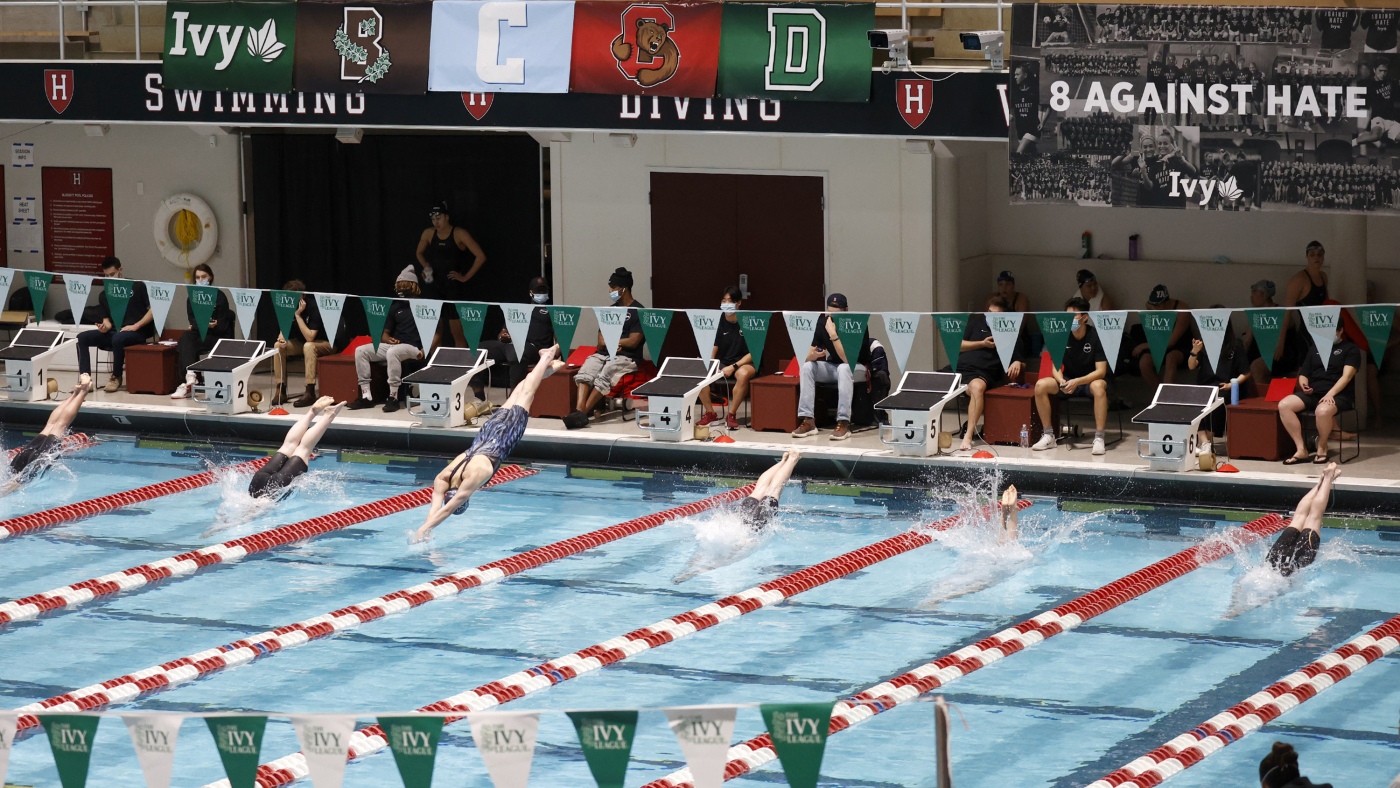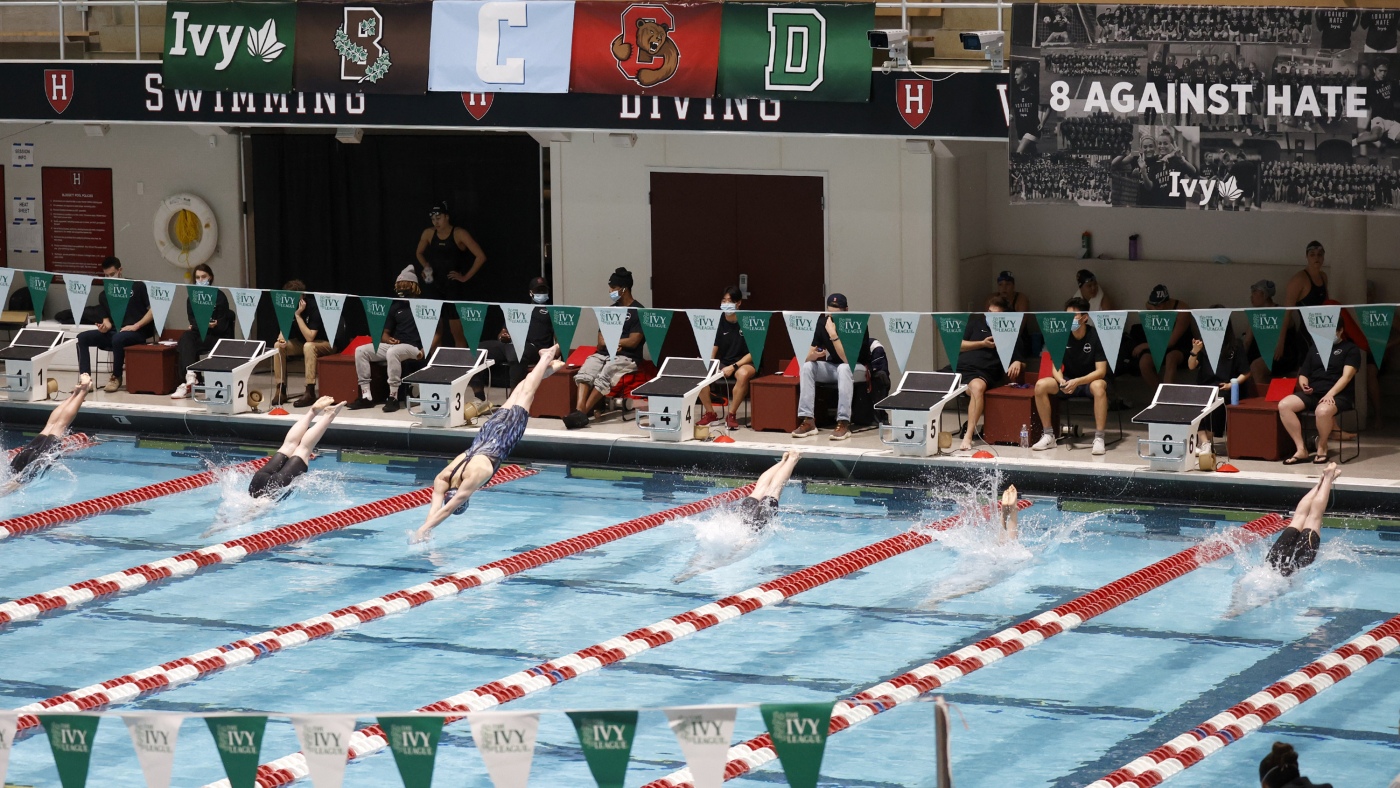The case of Lia Thomas, a transgender swimmer who competed for the University of Pennsylvania (UPenn), has become a focal point in the broader debate surrounding transgender athletes in sports. The recent settlement between UPenn and the U.S. Department of Education, which includes the modification of swimming records and the implementation of new policies regarding transgender athletes, has sparked intense discussion about fairness, inclusion, and the future of collegiate athletics. This decision, while specific to UPenn, has far-reaching implications that extend beyond the Ivy League, potentially reshaping policies and perceptions across the sports landscape.
The Anatomy of the Settlement
The agreement between UPenn and the U.S. Department of Education marks the resolution of a high-profile civil rights case that has been the subject of national debate. The settlement involves two primary actions:
Additionally, UPenn is expected to issue an apology to the female athletes who felt disadvantaged by Thomas’s participation, recognizing the impact on their competitive opportunities. This settlement underscores the university’s commitment to addressing concerns about fairness in women’s sports while navigating the complexities of gender identity and inclusion.
The Lia Thomas Case: A Catalyst for Debate
Lia Thomas’s participation in women’s swimming has ignited a fierce debate about the balance between inclusivity and fair competition. The case has highlighted the challenges of integrating transgender athletes into sports while ensuring that cisgender women are not disadvantaged.
- Arguments for Inclusion: Supporters of Thomas and other transgender athletes emphasize the importance of inclusivity, arguing that all individuals should have the right to participate in sports regardless of their gender identity. They contend that excluding transgender athletes is discriminatory and harmful, as it denies them opportunities for personal growth, physical well-being, and social connection. Proponents also highlight that transgender women undergo hormone therapy, which can reduce physical advantages, thereby mitigating concerns about fairness.
- Arguments for Fairness: Critics argue that transgender women retain inherent physical advantages, even after hormone therapy, which can compromise the fairness of competition for cisgender women. They express concerns about the potential for transgender athletes to dominate women’s sports, thereby diminishing opportunities for cisgender women to achieve recognition, scholarships, and professional aspirations. This debate has transcended sports, touching upon fundamental questions about gender identity, fairness, and the very definition of womanhood.
The Lia Thomas case has become a microcosm of the broader societal debate about how to accommodate transgender individuals in various aspects of life, including sports.
The Science of Physical Advantage: A Contentious Point
A central point of contention in the debate revolves around the extent to which hormone therapy mitigates the physical advantages conferred by male puberty. Research in this area is ongoing and complex, with varying conclusions.
- Studies Suggesting Advantage: Some studies suggest that transgender women retain certain advantages in bone density, muscle mass, and cardiovascular capacity, even after hormone therapy. These advantages, they argue, can translate into a competitive edge in sports. For example, research has shown that transgender women may retain greater muscle mass and bone density compared to cisgender women, which could provide a physical advantage in certain sports.
- Studies Suggesting Mitigation: Other studies indicate that hormone therapy can significantly reduce these advantages, bringing transgender women closer to the physical capabilities of cisgender women. These studies emphasize the importance of considering individual factors, such as the duration and intensity of hormone therapy, as well as the specific sport in question. For instance, some research suggests that after two years of hormone therapy, transgender women may no longer have a significant advantage in endurance sports.
The lack of definitive scientific consensus has fueled the debate, leaving policymakers and sports organizations to grapple with incomplete information. This uncertainty has led to a patchwork of policies and regulations, with some organizations adopting strict eligibility criteria while others prioritize inclusivity.
The Legal and Regulatory Framework: A Shifting Landscape
The legal and regulatory framework surrounding transgender athletes is constantly evolving, reflecting the ongoing societal debate and the complexities of balancing competing interests.
- Title IX: Title IX of the Education Amendments of 1972 prohibits sex-based discrimination in any educational program or activity receiving federal financial assistance. This law has been interpreted in various ways, with some arguing that it protects transgender athletes’ right to participate in sports consistent with their gender identity, while others argue that it allows for separate teams based on biological sex to ensure fair competition. The UPenn settlement adds another layer of complexity to this interpretation, potentially influencing future legal challenges and policy decisions.
- State Laws: Numerous states have enacted laws that restrict or ban transgender athletes from participating in women’s sports. These laws typically define sex based on biological characteristics at birth. For example, states like Idaho, Florida, and Texas have implemented policies that bar transgender women from competing in women’s sports, citing concerns about fairness and the potential for dominance by transgender athletes.
- Sports Organizations: Various sports organizations, such as the NCAA and the International Olympic Committee, have established their own policies regarding transgender athletes. These policies often involve hormone level requirements and other criteria for eligibility. For instance, the NCAA has adopted a policy that allows transgender women to compete in women’s sports after completing one year of testosterone suppression therapy.
The UPenn settlement could serve as a precedent for other institutions and sports organizations facing similar challenges, potentially influencing future legal challenges and policy decisions.
Potential Consequences and the Broader Implications
The UPenn settlement could have far-reaching consequences for transgender athletes and the broader sports community.
- Precedent Setting: The settlement could serve as a precedent for other institutions and sports organizations facing similar challenges. It may embolden those who advocate for stricter regulations on transgender athletes’ participation in women’s sports, potentially leading to a wave of policy changes across the country.
- Impact on Transgender Athletes: The policy change at UPenn could discourage transgender athletes from participating in sports, limiting their opportunities for personal growth and social inclusion. It could also create a chilling effect, making transgender athletes feel unwelcome and excluded from the sports community. This could have long-term implications for the mental health and well-being of transgender individuals, as sports can play a crucial role in fostering a sense of belonging and self-esteem.
- Further Litigation: The settlement is unlikely to end the legal battles surrounding transgender athletes in sports. It is possible that other institutions will face lawsuits or federal investigations, leading to further litigation and legal uncertainty. This could create a fragmented landscape of policies and regulations, making it difficult for athletes and institutions to navigate the complexities of transgender participation in sports.
- The Future of Fairness: The debate surrounding transgender athletes in sports raises fundamental questions about the definition of fairness and how to balance competing interests. It highlights the need for ongoing dialogue, scientific research, and policy development to create a more inclusive and equitable sports environment for all. The UPenn settlement underscores the importance of finding a balance between inclusivity and fairness, ensuring that all athletes have the opportunity to compete in a manner that is both respectful and equitable.
A Fork in the Road: The Path Forward
The UPenn settlement represents a significant moment in the ongoing discussion about transgender athletes in sports. While it may provide clarity in the short term, it also raises fundamental questions about inclusion, fairness, and the future of collegiate athletics. The path forward requires a nuanced approach, one that acknowledges the complexities of the issue, respects the rights of all athletes, and strives to create a sports environment that is both fair and inclusive. This includes:
- Continued Research: Further research is needed to better understand the impact of hormone therapy on transgender athletes’ physical capabilities and to develop evidence-based policies that ensure fair competition. This research should consider individual factors, such as the duration and intensity of hormone therapy, as well as the specific sport in question.
- Open Dialogue: Honest and respectful dialogue is essential to bridge the divide between opposing viewpoints and to find common ground. This dialogue should involve athletes, coaches, administrators, scientists, and transgender advocates. By fostering open and inclusive conversations, stakeholders can work together to develop policies that prioritize both fairness and inclusivity.
- Individualized Assessments: Policies should consider individual factors, such as the duration and intensity of hormone therapy, as well as the specific sport in question. A one-size-fits-all approach is unlikely to be effective or fair. For example, policies could be tailored to different sports, taking into account the unique physical demands and competitive dynamics of each discipline.
- Alternative Solutions: Exploring alternative solutions, such as creating separate divisions or modifying existing rules, may help to address concerns about fairness while preserving opportunities for transgender athletes to participate in sports. For instance, some organizations have proposed creating open divisions that allow transgender athletes to compete against each other, thereby ensuring fair competition while maintaining inclusivity.
- Prioritizing Inclusion: Ultimately, the goal should be to create a sports environment that is welcoming and inclusive for all athletes, regardless of their gender identity. This requires a commitment to education, understanding, and respect. By fostering a culture of inclusivity, sports organizations can ensure that all athletes feel valued and respected, regardless of their background or identity.
Beyond the Headlines: A Call for Understanding
The UPenn case, and the settlement that followed, serve as a stark reminder that the issue of transgender athletes in sports is far from settled. It’s a complex issue, deeply intertwined with science, law, and deeply held beliefs about fairness and identity. Moving forward, it is crucial to move beyond the headlines and engage in thoughtful, evidence-based discussions that prioritize understanding and respect for all individuals. Only then can we hope to forge a path that balances the rights of transgender athletes with the principles of fair competition, creating a sports landscape that is truly inclusive and equitable for everyone. By fostering open dialogue, conducting further research, and exploring alternative solutions, stakeholders can work together to develop policies that prioritize both fairness and inclusivity, ensuring that all athletes have the opportunity to compete in a manner that is both respectful and equitable.








